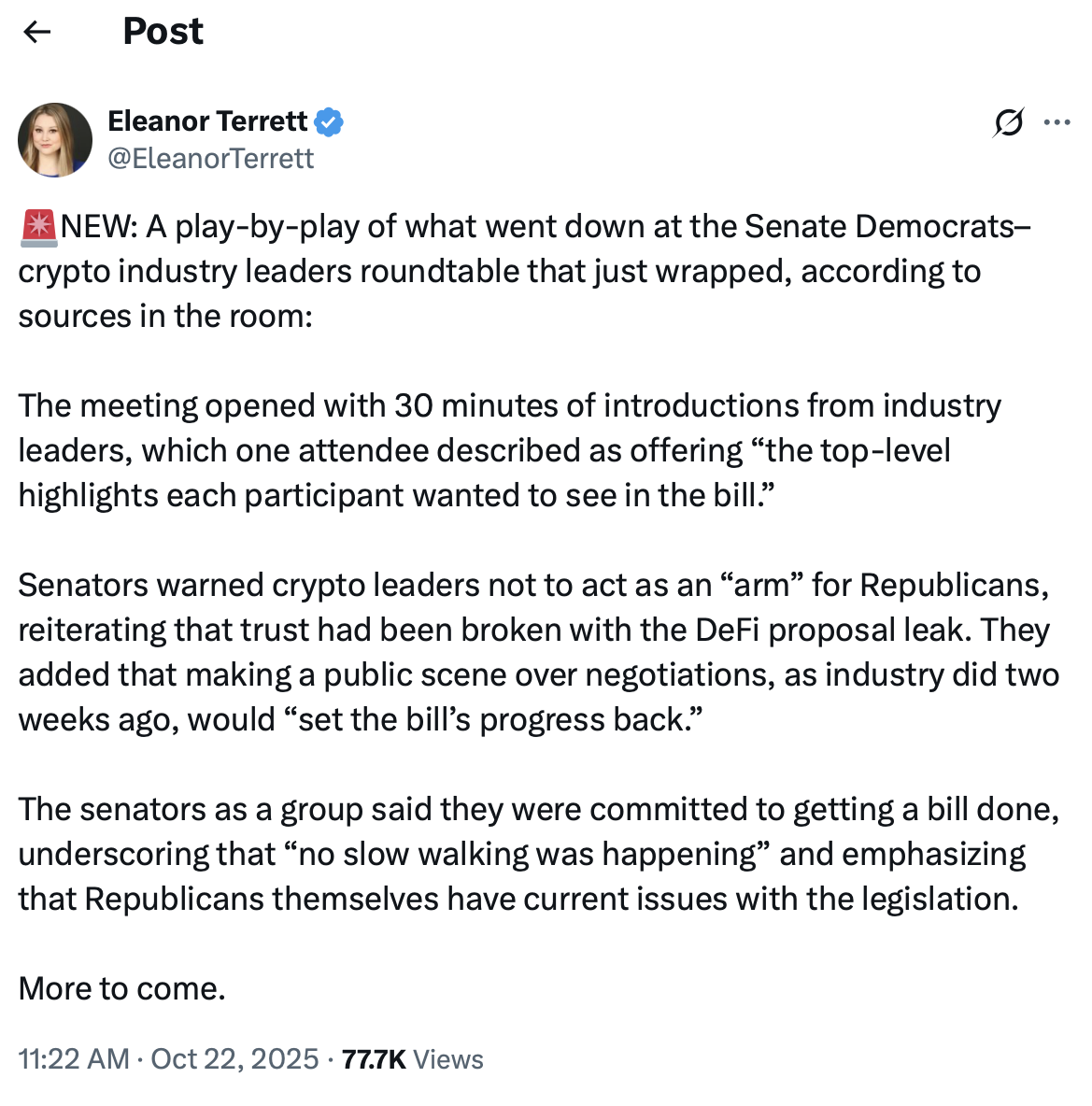The STREAMLINE Act proposes to modernize the Bank Secrecy Act by raising reporting thresholds for cash transactions and suspicious activities, easing compliance burdens on banks and crypto firms while maintaining anti-money laundering protections. This update, unchanged for over 50 years, aims to cut red tape amid inflation without compromising law enforcement tools.
-
Key Update: CTR Threshold Rises – The Currency Transaction Report limit increases from $10,000 to $30,000, reflecting economic changes since 1970.
-
SAR Thresholds Adjusted – Suspicious Activity Reports now start at $3,000 or $10,000 based on suspicion levels, simplifying filings for financial institutions.
-
Inflation Indexing Included – The Treasury Department must review and adjust thresholds every five years to keep pace with rising costs, benefiting crypto exchanges like Coinbase and Kraken.
Discover how the STREAMLINE Act updates Bank Secrecy Act rules for crypto and banks. Learn about threshold changes and industry impacts in this comprehensive guide. Stay informed on AML reforms today.
What is the STREAMLINE Act and Its Impact on Crypto Regulation?
The STREAMLINE Act is a bipartisan legislative proposal introduced by U.S. senators, including Senate Banking Committee Chair Tim Scott and Senator Pete Ricketts, to update the decades-old Bank Secrecy Act. This foundational anti-money laundering law, enacted in 1970, requires financial institutions to report suspicious activities to help prevent crimes like money laundering and terrorist financing. The bill raises key reporting thresholds for the first time in over 50 years, addressing inflation’s erosion of these limits while preserving essential tools for law enforcement.
How Do the New Reporting Thresholds Affect Banks and Crypto Companies?
The STREAMLINE Act significantly revises the Currency Transaction Report (CTR) threshold from $10,000 to $30,000 for cash transactions, reducing the volume of routine filings for banks and credit unions. For Suspicious Activity Reports (SARs), the thresholds shift from $2,000 to $3,000 for lower-suspicion cases and from $5,000 to $10,000 for higher-risk ones, streamlining processes without weakening oversight. According to Senator Pete Ricketts, these changes are overdue after more than 50 years of inflation, stating, “The Bank Secrecy Act’s reporting thresholds are badly outdated. They must be modernized.”
This modernization extends to the crypto sector, where U.S.-based exchanges such as Coinbase and Kraken must already adhere to Bank Secrecy Act requirements. By cutting administrative burdens, the act could foster innovation in digital assets while ensuring compliance with federal standards. Financial experts note that outdated thresholds have led to an overload of reports—over 20 million SARs filed annually in recent years—making it harder for authorities to focus on genuine threats. The bill mandates the Treasury Department to index these thresholds for inflation every five years, providing long-term adaptability. Data from the Financial Crimes Enforcement Network (FinCEN) shows that current rules generate billions in compliance costs for institutions, a burden the STREAMLINE Act seeks to alleviate strategically.
Frequently Asked Questions
What Changes Does the STREAMLINE Act Make to Anti-Money Laundering Reporting?
The STREAMLINE Act raises the CTR threshold to $30,000 from $10,000 and adjusts SAR thresholds to $3,000 and $10,000 from $2,000 and $5,000, respectively. It also requires inflation adjustments every five years by the Treasury. These updates modernize the 1970 Bank Secrecy Act, balancing efficiency for banks and crypto firms with robust crime prevention.
How Will the STREAMLINE Act Influence Crypto Exchanges in the U.S.?
The STREAMLINE Act will ease reporting requirements for crypto exchanges like Coinbase and Kraken by updating outdated Bank Secrecy Act thresholds, reducing paperwork without diluting anti-money laundering safeguards. This could lower operational costs and encourage growth in the digital asset space, as confirmed by industry compliance data showing high current filing volumes.
Key Takeaways
- Threshold Modernization: Raising CTR to $30,000 and SAR limits helps institutions focus on real risks amid inflation’s impact since 1970.
- Crypto Compliance Benefits: U.S. exchanges gain from reduced red tape, supporting innovation while upholding Bank Secrecy Act standards.
- Bipartisan Support: Led by Senators Scott and Ricketts, the act ensures law enforcement tools remain effective; monitor its progress for regulatory shifts.
Conclusion
The STREAMLINE Act represents a pivotal step in updating the Bank Secrecy Act for the modern financial landscape, including crypto regulation through higher reporting thresholds that combat inflation without sacrificing anti-money laundering efficacy. As senators like Tim Scott and Pete Ricketts champion these reforms, the legislation promises to streamline operations for banks and digital asset firms alike. With ongoing discussions between lawmakers and crypto leaders, such as recent meetings involving Senator Kirsten Gillibrand and executives from Coinbase, Kraken, and Ripple, the path toward balanced oversight appears promising. Stakeholders should watch for advancements post-government reopening to gauge broader implications for the evolving crypto ecosystem.
The STREAMLINE Act would update anti–money laundering rules by lifting decades-old thresholds for transaction reporting, cutting red tape for banks and crypto companies.
A group of US senators led by Senate Banking Committee Chair Tim Scott (R-S.C.) has introduced legislation to modernize the Bank Secrecy Act, the foundation of the country’s Anti-Money Laundering (AML) framework.
The Bank Secrecy Act, passed in 1970, obliges banks, credit unions, and other financial institutions to help federal authorities detect and prevent financial crimes, including money laundering, terrorist financing, and related illicit activity.
The proposed legislation, known as the STREAMLINE Act, would raise the Bank Secrecy Act’s reporting thresholds for the first time since its creation more than 50 years ago.
The bill increases the Currency Transaction Report (CTR) threshold to $30,000 from $10,000 and the Suspicious Activity Report (SAR) thresholds from $2,000 to $3,000 and $5,000 to $10,000, while requiring the Treasury Department to adjust these amounts every five years to account for inflation.
Under current law, financial institutions must file CTRs for cash transactions exceeding $10,000 and SARs for transactions involving $2,000 to $5,000, depending on the level of suspicion or evidence of criminal activity.
Senator Pete Ricketts, who supports the bill, said, “After more than 50 years of inflation, the Bank Secrecy Act’s reporting thresholds are badly outdated. They must be modernized.”
He added that the new bill “cuts red tape for banks and credit unions,” ensuring “law enforcement still has the tools they need to do their job.”
US-based crypto exchanges like Coinbase and Kraken are also required to comply with the Bank Secrecy Act.
Crypto Leaders and Lawmakers Engage on Regulation
As lawmakers advance the STREAMLINE Act and broader financial reforms, the crypto industry is ramping up its involvement in policy discussions to shape a supportive regulatory environment.
On Tuesday, a coalition of fintech and crypto trade groups sent a letter to the US Consumer Financial Protection Bureau (CFPB), advocating for the finalization of an open banking rule. This rule would confirm that individuals, rather than banks, own their financial data, enabling secure sharing via application programming interfaces (APIs).
Open banking bridges traditional finance with innovative areas like decentralized finance (DeFi), crypto payment systems, and digital platforms, potentially unlocking new opportunities for consumers and businesses in the digital asset space.
In parallel, Senate Democrats convened with prominent crypto industry figures to discuss the US market structure bill, serving as the Senate’s version of the House’s CLARITY Act. This framework seeks to establish a cohesive federal approach to digital asset oversight. On Wednesday, Senator Kirsten Gillibrand joined other Senate Democrats in meetings with leaders from Circle, Ripple, Kraken, Coinbase, and Chainlink.

Source: Eleanor Terrett
Journalist Eleanor Terrett reported on X that the senators collectively affirmed their commitment to passing a bill. These engagements underscore the industry’s push for clear, unified rules amid ongoing regulatory developments.
The US government shutdown, which began on October 1 and ranks as the third-longest in history, has delayed legislative action. A vote on the digital assets market structure bill is not expected until operations resume, highlighting the interplay between fiscal policy and crypto advancements.
Industry observers emphasize the importance of these interactions, as they could lead to balanced regulations that support growth while addressing risks. For instance, open banking initiatives align with crypto’s emphasis on user control and interoperability, potentially integrating blockchain technologies more seamlessly into everyday finance. The STREAMLINE Act’s focus on efficient AML compliance complements these efforts by reducing barriers for compliant crypto operations.
Financial analysts from institutions like the Financial Stability Oversight Council have long noted the need for updated frameworks to handle the rise of digital currencies. With crypto market capitalization exceeding $2 trillion in recent assessments, modernizing laws like the Bank Secrecy Act is crucial for maintaining the US’s position as a global innovation hub.
Looking ahead, the convergence of these policy streams—the STREAMLINE Act’s procedural efficiencies, open banking’s data empowerment, and market structure bills’ regulatory clarity—signals a maturing approach to integrating crypto into the broader economy. Lawmakers’ dedication, as voiced in recent meetings, suggests momentum toward actionable reforms that prioritize both security and accessibility.
